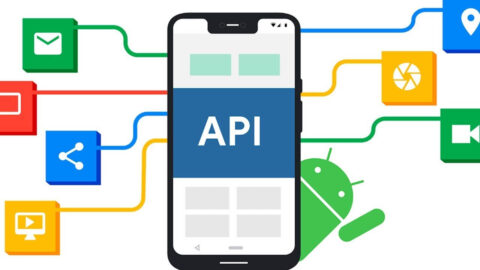Open-Source License Compliance Tools
The use of open-source software has increased dramatically, worldwide in the last decade. With the exposure to a wider variety of licensing models, organizations need to keep a closer eye on what rights these licensing models give an organization. There is also the question about copyright and the protection of personal information. Corporate audits include various areas of responsibility that include the organization’s responsible use of the software with open-source license compliance tools usage.
Table of Contents
Regulatory compliance, therefore, includes the diligent management of any proprietary and open-source software licenses. Because organizations have a legal obligation to protect the well-being of the business and its investors. Hence, it goes without saying that meeting the compliance standards is beneficial to the business in the long run. Breaching the regulations of regulatory bodies can have a negative impact on the business. Not only can organizations pay penalties, but the organization’s public reputation may receive harm.
Why You Should Use Open-Source License Compliance Tools
Traditionally, compliance officers will collaborate with development teams to manage to license of software and source code being utilized by the organization. This manual process has proven to be a time-consuming one. Dimensions such as Policy Management, Data security, and code content validation. Implementing compliance tools for license for open source software speeds this process up considerably. Automating this role improves its effectiveness and allows employees to focus on the important task at hand of developing high-quality software. The management of this key compliance component can be simplified by the utilization of open-source license compliance tools.
The various tools in the market offer some of the following abilities:
- Commercial scanning of online open-source repositories.
- Scanning for open-source code sets implemented into existing development projects and creating a registry of open-source code.
- Performing online verification of open-source code sets in use. Comparing the licensed code against public repositories to identify possible copyright infringement.
- Standardizing and sharing open-source licensing information between organizations.
- Creating workflow compliance mechanisms that can be orchestrated as part of DevOps pipeline orchestration.
Organizations need to start by clearly defining their policies surrounding open-source software. Next, a needs assessment must be carried out to see where the gap is, and which automated compliance tool will be able to meet those needs. Organizations can alternatively partner with vendors who can walk them through the implementation process. Regular audits of all the open-source software in use will highlight potential problems that an organization can actively address.
While there are benefits to implementing open-source software, there are some red flags that organizations need to be aware of when implementing open-source solutions. Primarily, what do we need to be aware of before jumping headfirst into open-source software solutions?
Is the Open Source Software bug-free?
The response is a resounding nay in every way. This is a common misconception about “open source,” and it is not just motivated by financial considerations. Open-source software producers and contributors may be able to charge a fee for the open-source software that they have produced or contributed to if they so want. Most of the time, however, in order to secure an open-source license, the company must first share the source code in a variety of areas before selling the product. Some programmers feel they can charge more for their software services and support rather than simply the product itself, and so earn a higher profit. For this reason, most of the time, they make their software available for free to the public while simultaneously aiding clients with their issues.
What Are Some Examples of Open Source Software?
Some examples of extensively used and well acclaimed open-source software are as follows:
GNU/Linux, Mozilla, VLC, SugarCRM, GIMP, VNC,
The Apache HTTP Server, LibreOffice, jQuery, FTP, PHP, Python.
Free of Charge:
The vast majority of software that is a part of the open-source project is without charge. However, this agreement does not cover new items that are using these source codes. And the user may need to pay a fee in this scenario. Despite the fact that Android is an open-source project, the Android applications that it develops are usually require a fee.
Learning Opportunities:
Because these initiatives are available to the public, there is a chance to learn from them. The outcome is that anyone who is new to programming may experiment with it and display their ability to others. Open source software (OSS) enables programmers to cooperate in order to enhance the software. They accomplish this by addressing bugs in the code (bug patches) and upgrading the software to ensure that it is compatible with new technologies.. Additionally, they contribute to the creation of new features.
The first red flag that organizations need to be aware of is that open-source software might open your source code to the outside world. A typical example of this is software utilizing the GNU General Public License. Under terms of this license when a copy of open-source code is implemented and altered, such derivative code needs to be redistributed under the same license. This implies that your changes, which might be very project-specific, need to be published back into the public domain under the GPL. Using software with this kind of license restrictions can cause serious issues for an organization and its clients.
Stepping into this trap can ultimately lead to costly legal proceedings. Because the author of such software can claim that the organization is trying to patent the authors work.
The second red flag has a broader financial impact, especially when an organization is looking for investors. Investors who are diligent would often require an organization, during due diligence reporting, to list and motivate their use of open-source components and code libraries. Investors might step away or require warranties from the organization to ensure that all open-source regulatory compliance will be in force.
The implementation of any open-source components into proprietary code sets is a meticiolus process. The importance of implementing a solid open-source license compliance tool is high. The future of open source is a bright one. And organizations need to take advantage of technologies at their disposal to achieve a competitive edge. Staying compliant will be the key to balancing the scale between financial risks and return on investment.

Linda Maltz is vice president of design and consulting at Cuboca, a project management training and consulting organization specializing in construction management and BIM. She is certified Primavera P6 Trainer.










